Listen to this Museletter
Chariots, Codes, and Constellations: A Civilisational Arc of National Security
Across epochs, civilisations have competed not just on might, but on mastery of terrain, tools, and time itself. In ancient India, it was the chariot — an engineering marvel of speed, coordination, and command. In the Mayan world, it was the observatory — a cosmic calendar of power. In Cold War America, it was the moon landing — an act of technological theatre as much as exploration.
Today, the equivalents are no less grand. Some are less visible, like sovereign compute, autonomous systems, and synthetic cognition. Others, like beyond-Earth capabilities, are once again commanding the world’s attention.
National security has always been more than just defence. It is the infrastructure of sovereignty, the architecture of resilience, and the grammar through which nations assert stability and pursue progress. It is no longer just about men at the borders. It is about signals in orbit, chips in drones, algorithms in war rooms, and narratives that define legitimacy and long-term progress.
We are not witnessing a new phenomenon. We are living through a familiar arc — a civilisational recursion, where the materials of power evolve, but the instincts remain unchanged. The question, then, is not what is changing. The question is who can decode the past well enough to shape the future, on their terms.
To go deeper into these ideas and explore how Agna is decoding the future of sovereignty, science, and scale — Read on The Agna Museletter.
It’s where we connect the past, present, and frontier — with rigour, resolve, and a civilisational lens.
Museletter Highlights:
- Agna Insights
Read on to explore the civilisational arc of National Security - Agna Perspectives
Interesting and insightful reads from our social media -
Agna Team
Team Agna engagement highlights - On the ‘Front’ier Tech
Latest updates on Frontier Technologies - Agna Recommends
Team Agna’s curated recommendations for you
Agna Insights
Summary
National security has evolved from defending borders to securing infrastructure — from chariots and citadels to chips, satellites, and sovereign compute. Power has always been civilisational — expressed through what we build, control, and scale. Today, infrastructure is sovereignty.
Ancient statecraft encoded national security into myths, temples, and logistics. Civilisations that mastered perception, communication, and supply chains prevailed. This logic persists — only the tools have changed: code, silicon, orbital bandwidth.
We are now in a phase of strategic competition and progression, not war. Six tectonic shifts define the new paradigm:
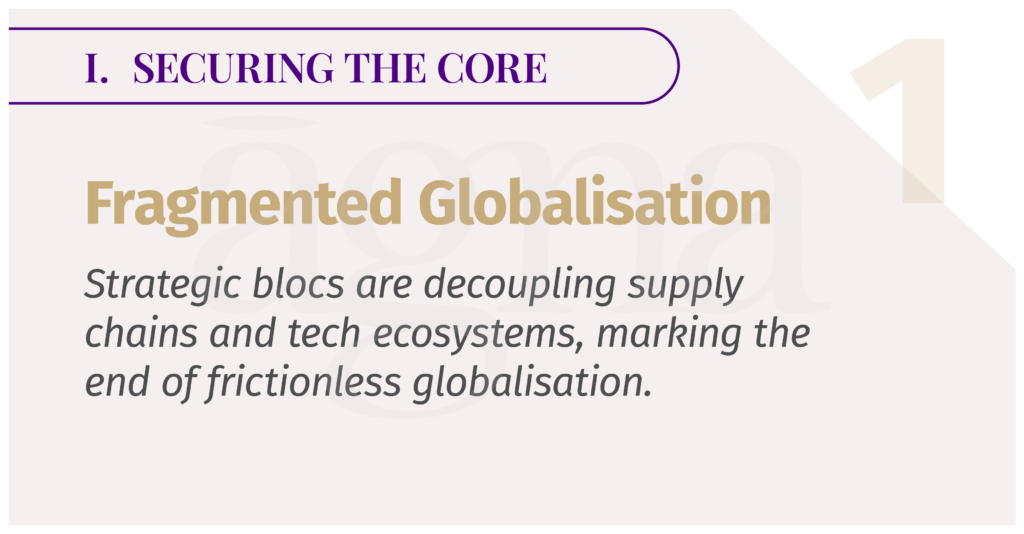
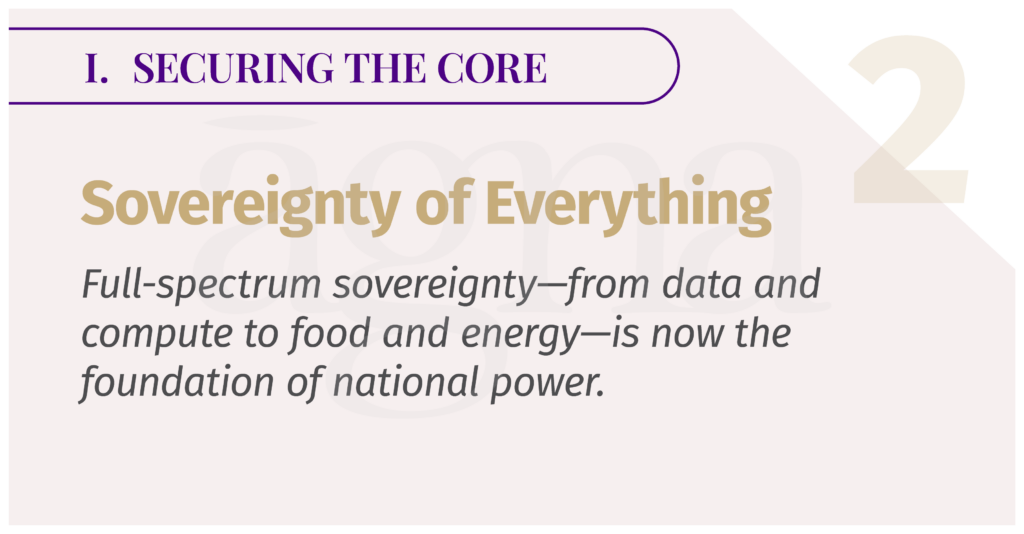
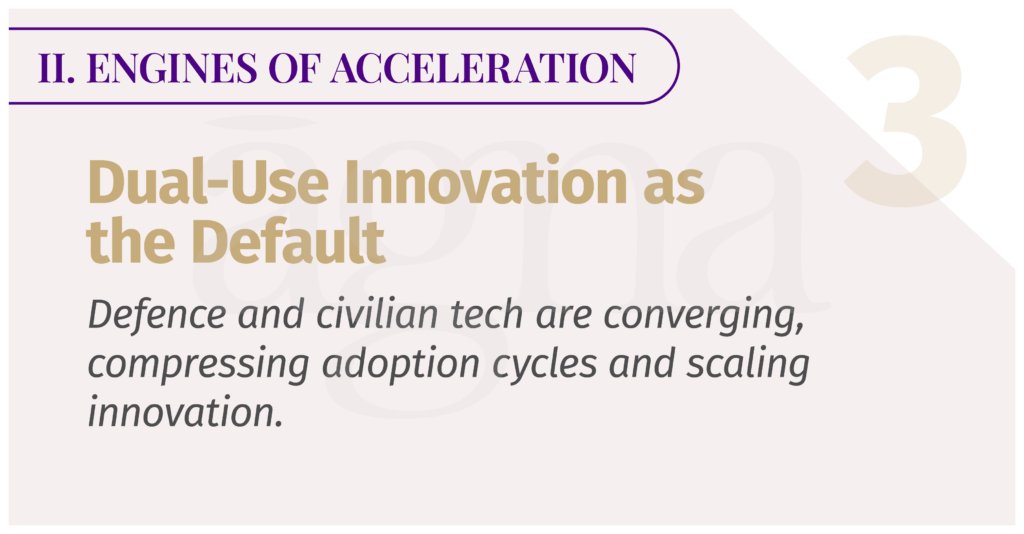
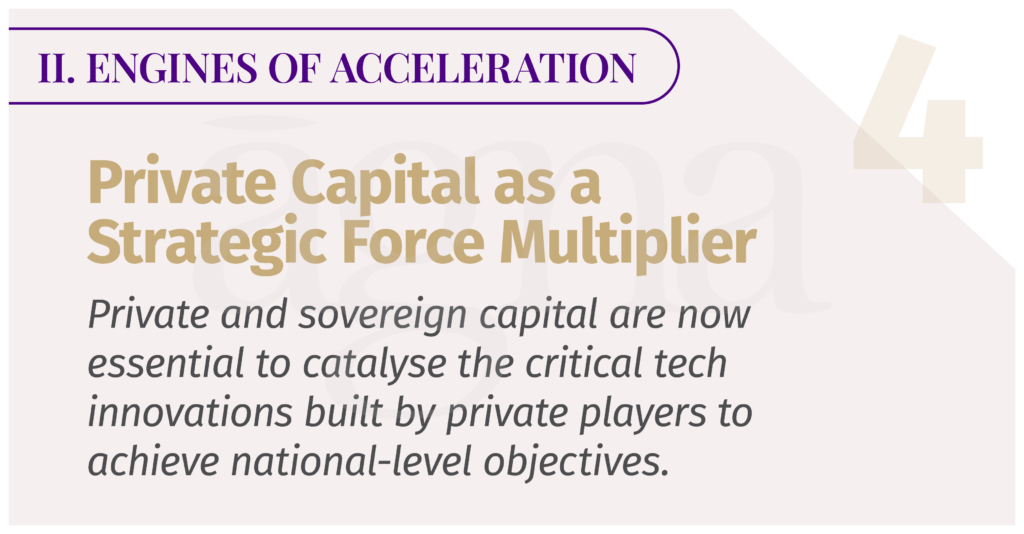
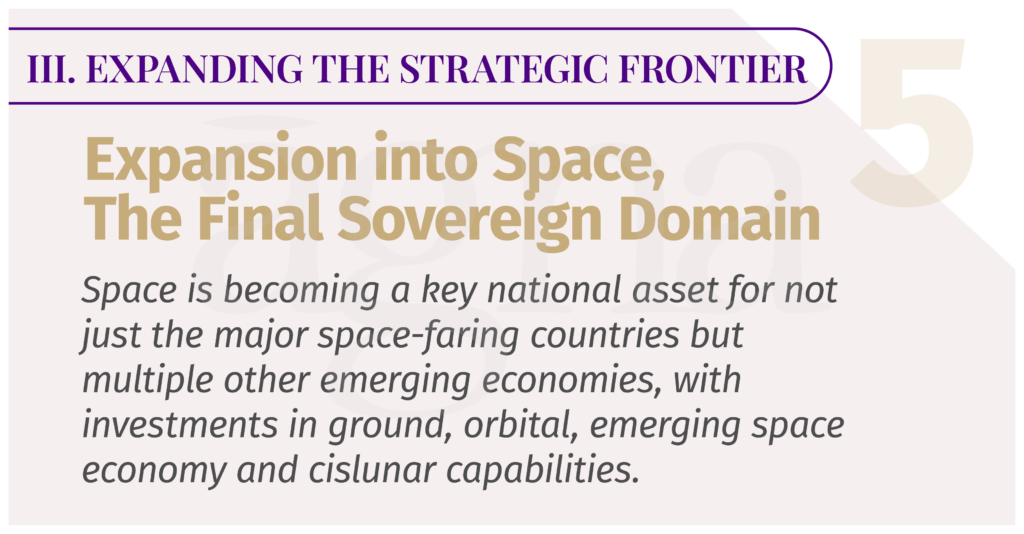
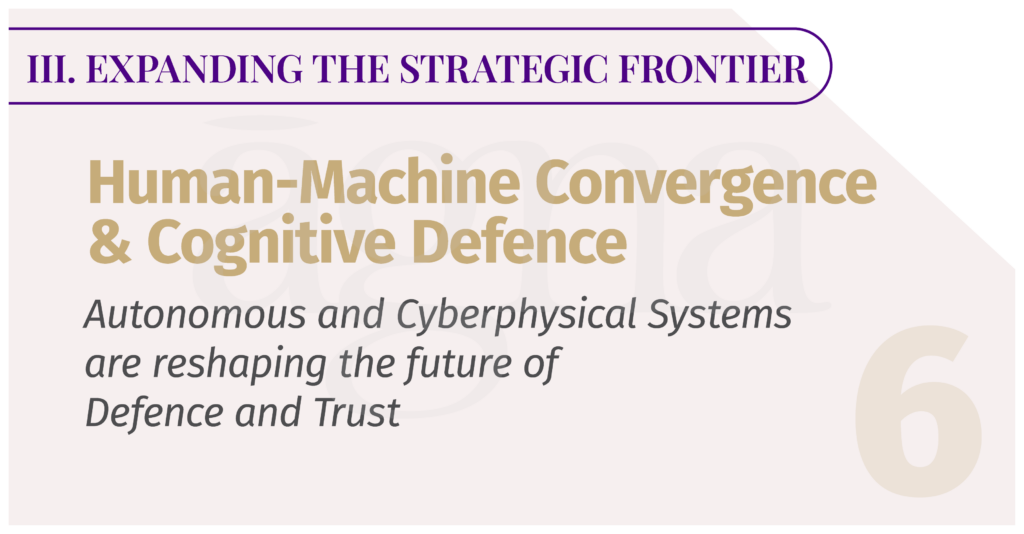
I. From Empires to Ecosystems: The Evolving Foundations of National Power
National security is no longer just about soldiers and borders. It is about data, satellites, chips, cognition — the architecture of control in a world of contested interdependence.
While silicon chips and satellite constellations now define modern might, civilisations have always derived strength from infrastructure — chariots, temples, observatories, fortresses. What we call “national security” today was once encoded in myths, manifest in architecture, and enforced through networks of alliances, intelligence, and terrain control. Each era had its sovereign stack — a set of tools, systems, and symbols that signalled command. We are now entering a new era of National Security, where infrastructure is sovereignty, and the line between defence and economic power is vanishing.
II. The Civilisational Playbook: Lessons From the Old World
The Mahabharata and Ramayana were not merely epics—they were civilisational blueprints for leadership, ethics, and the restoration of Dharma.
At Agna, we understand Dharma as the inner compass—our unwavering commitment to act with clarity, integrity, and purpose. It is the strategic and moral anchor that aligns action (Karma) with a greater cosmic and civic order.
From Krishna’s battlefield diplomacy to Ravana’s compromised intelligence network, ancient India treated information, terrain, and narrative as core strategic assets and sacred instruments in preserving that very order.
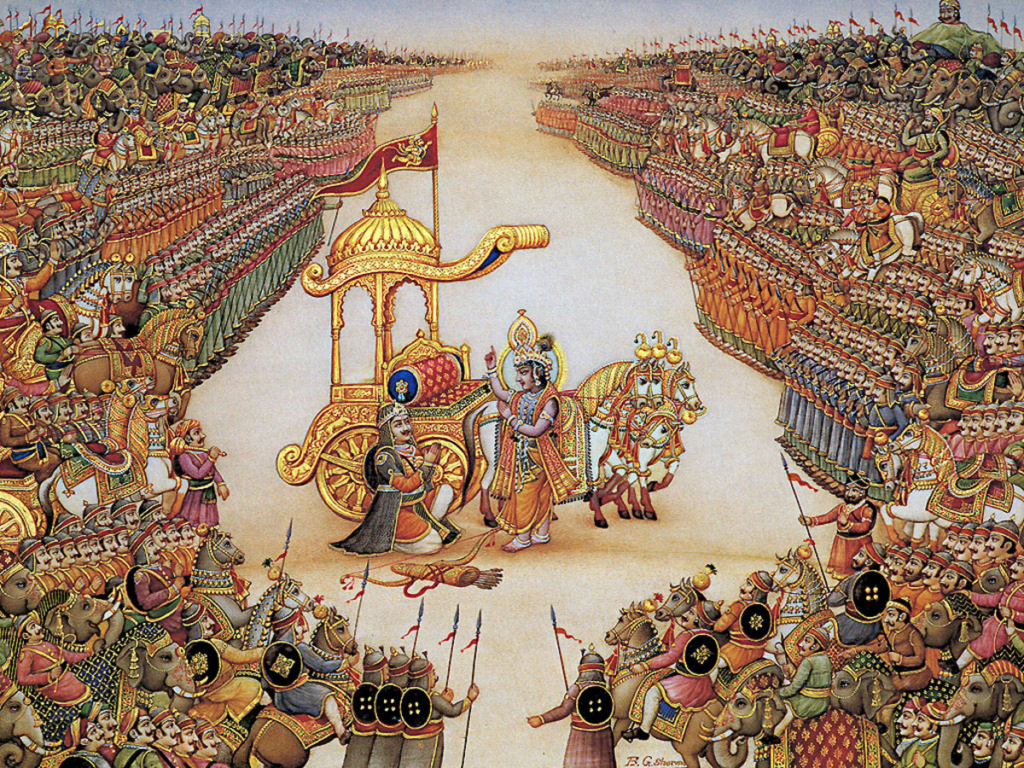

The Mayans used astronomy as an early ISR (Intelligence, Surveillance and Reconnaissance) system. The Greeks and Romans turned logistics into a form of deterrence. Genghis Khan created one of history’s most resilient distributed supply chains — a model modern defence networks now emulate in sovereign cloud and modular AI systems.

Across time, the message is clear: those who control perception, supply chains and logistics (access to resources and capabilities), networks and coordination, and novel technological capabilities shape the outcome.
Temples of Power: From Sacred Monuments to Strategic Infrastructure
Throughout history, rulers didn’t just build defences — they built monuments that projected legitimacy, supremacy, and state capacity. Temples, pyramids, observatories, and citadels were instruments of power, embedded into stone.
While the Pyramids of Giza may have originated as tombs, they quickly became tools of awe — displays of divine authority, engineering prowess, and an unshakable regime. The Cholas’ Brihadeeswara temple, the Forbidden City, the Taj Mahal, and the Mayan observatories at Chichen Itza followed similar logic — expressions of what a civilisation could build, command, and sustain.

The Cold War continued this logic in modern form. Spaceports like Baikonur and Cape Canaveral weren’t just launch sites — they were geopolitical signals of technological coordination and national ambition.
The launch of Sputnik in 1957 marked not just the beginning of the space age but a declaration of technological ascendancy. For the first time, a human-made object orbited the Earth, transforming space into a new theatre of strategic competition. The U.S. response culminated in the Apollo 11 moon landing, which reasserted dominance not just in space but in industrial coordination and scientific capability.
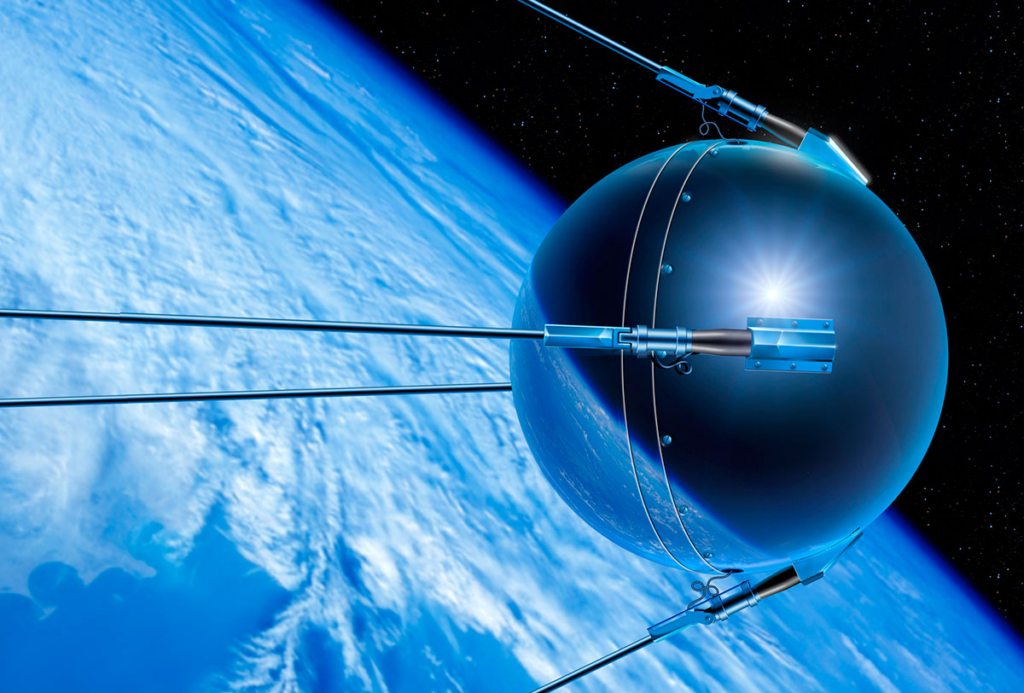
Source: Cosmos Magazine

Today, the contest continues. Only now, the battleground includes AI chips, sovereign compute stacks, and the race to build the fastest, most powerful supercomputers. Space exploration is pivoting toward extraterrestrial infrastructure — from lunar bases to Mars ambitions — while the ground race is defined by who controls the most advanced data centres and edge infrastructure. Monumentalism persists — but its materials have changed: silicon, code, and orbital bandwidth.
III. The Tectonic Shifts: Why National Security Now
We are not on the brink of total war. But we are deep into a phase of strategic competition — across technologies, markets, and narratives. In this new world, every system, supply chain, and signal becomes strategic.
Six tectonic shifts are shaping this transformation:
i. Securing the Core
(Building Resilience, Strategic Sovereignty, and Industrial Power)
- Fragmented Globalisation: Strategic Fragmentegration Reshaping National Security
Globalisation is splintering into techno-strategic blocs – Supply chains, innovation ecosystems, and alliances are decoupling.
– The era of frictionless globalisation is over. National Security is now shaped by strategic fragmentegration (fragmentation + integration) — where defence, technology, and industrial ecosystems are decoupling across blocs, even as certain interdependencies persist.
– The U.S. would remain the defining defence and technology power. China continues to challenge this dominance, striving to expand its digital-industrial sphere. At the same time, nations like India, Russia, the UK, and Germany are no longer peripheral actors—they are rising as pivotal powers actively shaping the world’s strategic, technological, and geopolitical trajectory.
– From AI chips and drone subsystems to ISR satellites and sovereign cloud infrastructure, nations are accelerating the buildout of secure, domestic or allied alternatives.
– This shift is not about isolation, but about structured autonomy: defending sovereignty without entirely severing global flows, and building industrial strength within aligned corridors. - Sovereignty of Everything: From Strategic Control to Industrial Capability
Cyber, compute, energy, food, space, and data — sovereignty now spans every critical domain of national power.
– Major nations are racing to secure full-stack control over their strategic assets, making sovereignty the cornerstone of 21st-century power.
– This is a multi-decade realignment of production, infrastructure, and innovation ecosystems in response to global fragmentegration1 and geopolitical competition.
- Fragmentegration — a blend of fragmentation and integration — represents a new avatar of hyper-globalisation: the coexistence of global economic integration in some sectors or regions, alongside fragmentation in others, driven by geopolitical tensions, economic decoupling, strategic reshoring, selective integration, and evolving trade policies. ↩︎
ii. Engines of Acceleration
(How Innovation Will Be Catalysed and Scaled)
- Dual-Use Innovation as the Default
The civil-national security line is dissolving.
In today’s world, frontier technologies will remain the key enablers of National Security.
– AI, robotics, ISR satellites, and edge compute systems are built to serve both defence and civilian use, compressing adoption timelines and expanding total addressable markets. - Private Capital as a Strategic Force Multiplier
Capital now drives what governments alone can’t build.
– Private and sovereign funds are catalysing the rise of dual-use technologies that governments need but can’t innovate fast enough to build internally.
iii. Expanding the Strategic Frontier
(Where Future Competitions and Markets Will Unfold)
- Expansion into Space: The Final Sovereign Domain
From land and sea to low-Earth orbit and beyond, space is now a strategic domain.
– Our innate curiosity and competitive drive are making space the next contested domain, with orbital ISR, cislunar infrastructure, and sovereign space capabilities emerging as critical national assets. - Human-Machine Convergence & Cognitive Warfare
Warfare is becoming autonomous, digital, and psychological.
– As social trust becomes digital, cybersecurity is now both the frontline and the fault line.
– Future conflicts will play out across brain-machine interfaces, cyber-physical systems, and autonomous decision layers — where humans and machines co-learn, co-operate, and co-decide.
National security today is not a policy outcome — it’s a design principle. It informs how economies are structured, how supply chains are organised, and how technologies are deployed.
IV. Engines of Acceleration: The Innovation-Resilience Loop
Throughout history, technological advantage has shaped strategic advantage. But what’s changed now is the pace — innovation is no longer just a tool of deterrence — it is the cornerstone of national continuity and resilience.
Napoleon’s campaigns used maps, rapid mobilisation, and artillery standardisation to outmanoeuvre slower, fractured forces. WWI and WWII scaled this to entire societies. Central planning, propaganda, and nuclear programs transformed national economies into war machines.
The Cold War turned innovation into a pressure cooker — a relentless cycle of R&D escalation. Sputnik, GPS, semiconductors, the internet — all began as defence tools before reshaping civilian life.
Today, that cycle is tighter, faster, and more dual-use than ever. AI, hypersonics, edge robotics, and cognitive systems are developed in parallel across commercial and defence sectors. The next frontier of national security is modular, software-defined, and autonomously orchestrated– with civilian and strategic applications co-evolving.
An added nuance- The one who shapes the outcome is not just the one who has more — it’s who moves first, adapts fastest, and integrates deepest.
V. Capital Flows and the Birth of Dual-Use Startups
Private capital — from venture funds, growth equity, and sovereign investors — is rapidly aligning with the new geopolitical reality. In 2024, global investments in national security and defence technology startups exceeded USD 31 billion, a 33% year-on-year growth, according to PitchBook. This is not episodic funding — it’s the emergence of an entire dual-use industrial complex.
Why now?
- As states prioritise infrastructure resilience and strategic autonomy, global defence budgets are expanding: U.S. defence spending reached USD 968 billion in 2024 and is expected to cross a trillion dollars by 2026, and countries like India, Saudi Arabia, and Japan have announced multi-year modernisation outlays.
- Legacy defence primes are falling short: Procurement backlogs, platform rigidity, and limited software expertise have created systemic gaps that agile startups are now racing to fill.
- Tech tailwinds are real: AI-native ISR systems, robotics, cybersecurity, and software-defined autonomy are dual-use by design, opening up faster GTM routes and broader markets.
This isn’t about militarisation — it’s about modernisation.
This momentum is catalysing the formation of a new industrial base — agile, sovereign-aligned, and venture-scalable. Venture-backed national security startups are rapidly reshaping the competitive landscape. These companies are not only advancing strategic capabilities but also laying the foundation for resilient national infrastructure with wide-ranging civilian applications:
- Anduril Industries (US) – autonomous defence platforms
- Shield AI (US) – AI pilots for autonomous aircraft
- Saronic (US) – maritime ISR platforms
- HawkEye 360 (US) – commercial space-based radio frequency intelligence
- DroneShield (Australia) – counter-UAS and signal intelligence systems
- Blackshark.ai (Austria) – geospatial intelligence powered by synthetic environments
- EDGE Group (UAE) – acquiring and scaling deeptech startups across ISR, robotics, and AI munitions
- Asteria Aerospace (India) – ISR drones with dual-use applications
- Tonbo Imaging (India) – electro-optics for night vision and precision targeting
- Dhruva Space (India) – modular satellite platforms for dual-use missions
- NewSpace Research & Technologies (India) – AI-powered swarm drones for air combat
- Cerebras Systems (US) – wafer-scale AI chips for high-performance compute
- SambaNova Systems (US) – full-stack AI systems for training and inference
- Darktrace (UK) – autonomous AI for cyber threat detection and response
This is where the National Security Flywheel comes into motion:
Systemic Accelerants → Modernisation Budgets → (Private Capital Surge ↔ Dual-Use Startups ↔ Industrial Expansion) → Redefinition of National Security → Further Budget Allocations driven by accelerants
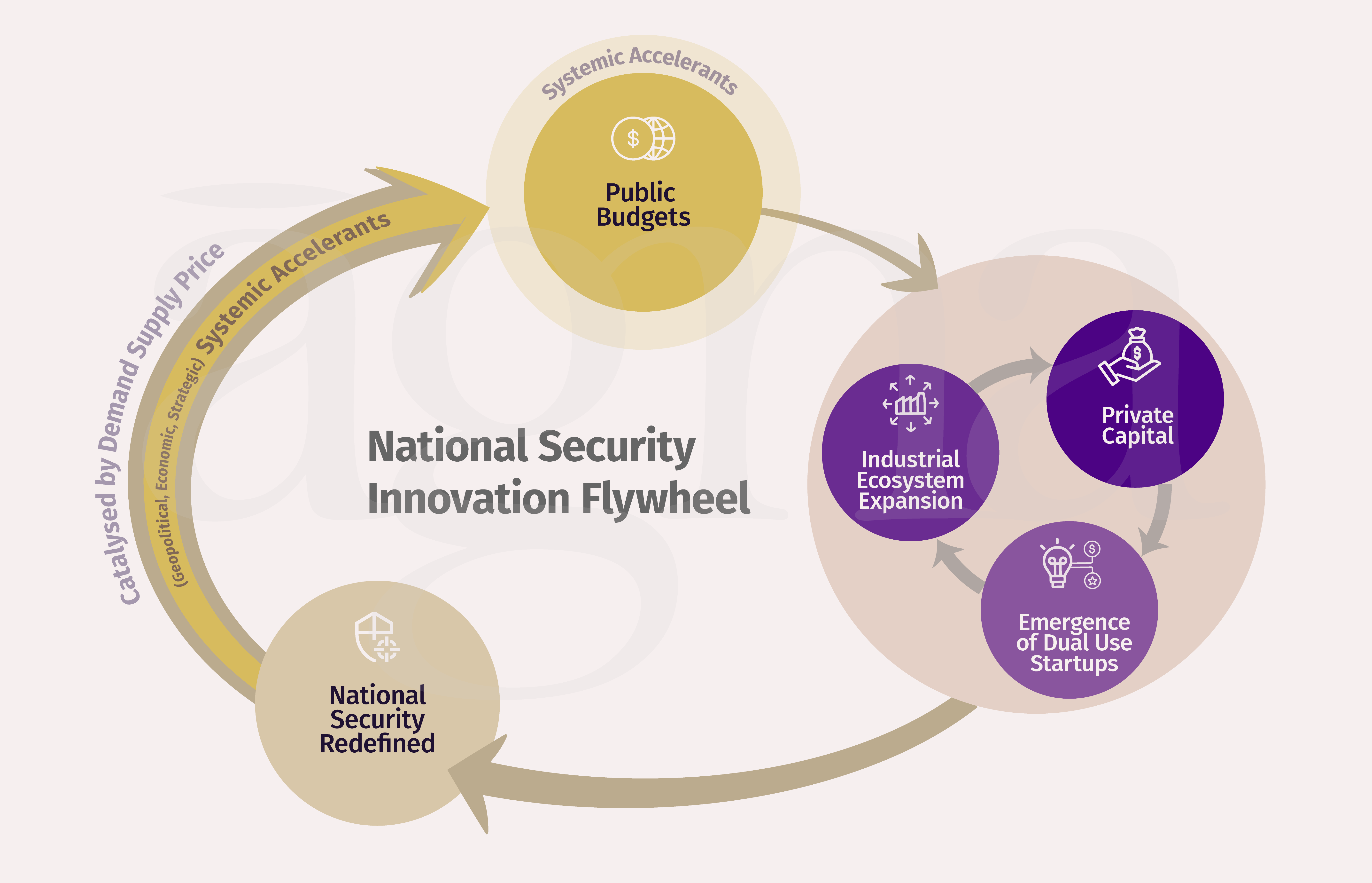
As emerging definitions of national security — such as cognitive resilience, orbital superiority, and sovereign compute — become urgent, governments are forced to prioritise and fund capabilities to modernise. This reinforces both the inner and outer flywheels:
- Inner flywheel: Capital ↔ Startup Scaling ↔ Industrial Ecosystem Growth
- Outer flywheel: Systemic risks and accelerants driving macro policy response
Key accelerants include:
- Demand–Supply Spirals: As demand surges for AI chips, ISR systems, and secure compute, supply constraints and vendor concentration (e.g., NVIDIA, TSMC, SpaceX) drive up costs.
- Talent Bottlenecks: Defence-specific talent is scarce. Startups offering mission-oriented cultures are increasingly attracting top-tier engineering talent.
- Strategic Scarcity Premium: Companies building critical tech stacks — from radiation-hardened processors to resilient edge nodes — command premiums due to high barriers and government pull.
As this dual (nested) flywheel gains velocity, national security is no longer just a sector — it is becoming a sovereign operating system for nations seeking agency in an uncertain world.
VI. What We See — and Why Agna Is Positioned for It
Agna is building a thesis around strategic autonomy — a future where national security and power stem from intelligent infrastructure, not just inherited might.
Our focus on the new age National Security ecosystem that encompasses (this is as per our proprietary internal strategic classification of the National Security layers)-
- Core Defence — Directed Energy & Innovative munitions, Next-gen fighters, bombers and naval platforms, etc. (Note- We do not plan to invest in companies that fall under or are likely to evolve into the Core Defence category.)
- Category A: Emerging National Security —
Sovereign infrastructure, Autonomous Defence & ISR, Perimeter & Internal Security Systems, Counter UAS & Anti Drone Systems, Hypersonic & Supersonic platforms, etc. - Category B: Civilian and National Security (Dual-use tech) —
Autonomous Systems, Human-Machine Interfaces, Frontier Space Systems, Environmental & Disaster Intelligence, Operational AI Systems, mobile power, etc. - Category C: Allied technologies (Civilian) —
Simulation & Synthetic Training, Quantum Ready Infrastructure, Space & Multidomain Operations, etc.
Our edge is in providing strategic and smart capital backed with clarity-driven conviction. We partner early, think long-term, and focus on sovereign, dual-use innovations that strengthen national resilience and advance human progress.
We’re actively sharing our detailed National Security thesis with aligned investors who recognise the relevance — and the opportunity — of building sovereign, dual-use infrastructure for the next century.
If you are a founder building for national security, or an investor aligned with our conviction, write to us at research@agnacapital.com with the subject: ‘Explore Investment Opportunities with Agna | Ref: National Security Museletter’
VII. The Arc Forward: From Chariots to Constellations
History doesn’t repeat — but it encodes. From the chariots of Kurukshetra to the observatories of Chichen Itza, from Roman roads to Soviet satellites, power has always been anchored in what civilisations choose to build.
Today’s equivalents are measured in teraflops & sovereign compute, launch & beyond earth capabilities, and other frontier innovations. We are laying the groundwork for the next 100 years — in compute, cognition, and constellation.
At Agna, we believe the future of national security lies not in confrontation, but in intelligent infrastructure that empowers sovereignty, resilience, stability and shared progress.
Agna Perspective
- Rahul Nagaraj’s observations: Rahul Nagaraj reflects on Dubai AI Week 2025, exploring breakthroughs in AI, spatial computing, and enterprise applications, while unpacking global and regional dynamics in AI adoption. He weaves insights from Dubai AI Festival 2025 and Machines Can See 2025, offering a multidimensional view of tech, policy, and purpose in MENA.
- Robo Cop: During Bangkok’s Songkran Festival, Thailand unveiled AI Police Cyborg 1.0—an operational robot equipped with surveillance tech to assist real-time law enforcement, marking a bold step in AI-led policing. Sci-fi meets street patrol, and it’s only just begun!
- Agna SMART Infrastructure Framework: AI’s rise is powered not just by data, but by infrastructure, and today’s 11,800+ data centres are already straining under the load. By 2035, they could consume as much power as all of India today, driving a radical shift toward SMART infrastructure that embeds intelligence across the tech stack.
- US Regulations: A year ago, we forecasted structural economic stress, and now it’s here. With the US embracing protectionist tariffs amid deindustrialisation and dedollarisation pressures, global trade is fragmenting. As Western economies wrestle with internal contradictions, emerging hubs like the UAE and Southeast Asia are poised to rise as new economic epicentres.
Team Engagement

Rahul Nagaraj and Nikhil Taurani from #TeamAgna attended the Dubai AI Festival 2025. It was a dynamic convergence of over 8,000 Industry experts, 100+ speakers, 30+ workshops, and 100+ exhibitors from over 100 countries. It emphasised AI’s seamless integration into daily life and the pivotal role of human-centric leadership in driving technological transformation.
Rahul Nagaraj attended Machines Can See 2025 with an agenda that spanned two high-impact days of keynotes, panels, and workshops led by global AI leaders. The event spotlighted cutting-edge advances in spatial intelligence, ethical AI governance, generative AI deployment, and national AI capacity-building, underscoring AI’s growing role as a force multiplier for digital transformation across sectors and geographies.


IMF–DIFC Regional Economic Outlook conference
Rahul Nagaraj also attended the IMF Regional Economic Outlook- The Middle East & Central Asia report launch event hosted by the IMF in association with DIFC, focused on macroeconomic themes shaping MENA and Central Asia. Key discussion featuring industry leaders offered region-specific insights into growth, fiscal policy, geopolitical shifts- such as multipolar world, localisation/indigenisation, dedollarisation, etc. and the future and how it can catalyse specific themes from an investor’s lens who is focused on the region and other emerging markets.
Link to the report- here.
On the ‘Front’ier Tech:
- Google launched Ironwood, a new AI hypercomputer powered by TPU v5p chips, optimised for large-scale inference workloads. It marks a shift toward efficient, production-ready AI at unprecedented scale.
- A new front in the global critical minerals race is emerging near Australia, with nations vying for access to Indonesian and Pacific resources. The region is becoming pivotal for energy transition supply chains and strategic security.
- The UAE will integrate AI education into its national school curriculum from kindergarten to Grade 12. This initiative aims to build a future-ready workforce and embed AI literacy early.
Agna Recommends:

This video explains how tiny particles, like electrons, behave in really strange ways that don’t match what we see in everyday life. It shows how trusting quantum mechanics reveals a fascinating world where particles can be in two places at once and even interfere with themselves.

TechSurge is a podcast that explores cutting-edge DeepTech innovations across AI, quantum computing, cybersecurity, etc.

Hosted by the Australian National University’s National Security College, this podcast delves into pressing global and regional security issues. It features discussions with experts on topics ranging from cybersecurity and geopolitics to defence policy and intelligence.
Listen to this Museletter
Questions? Feedback? Different perspective?
We invite you to engage with us and collaborate.
Warm Regards,
Team Agna
Click below to join our mailing list for The Agna Museletter.
